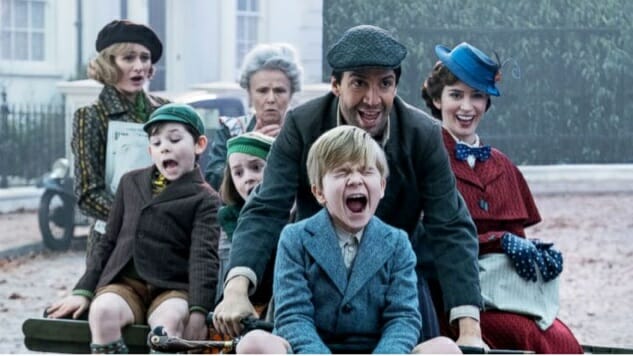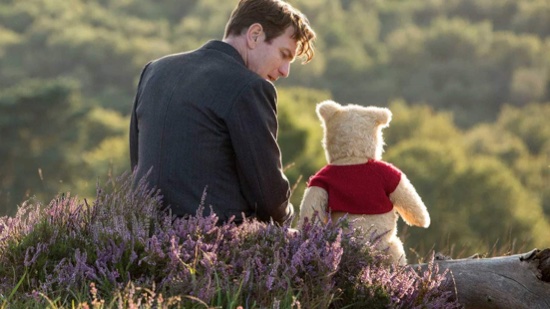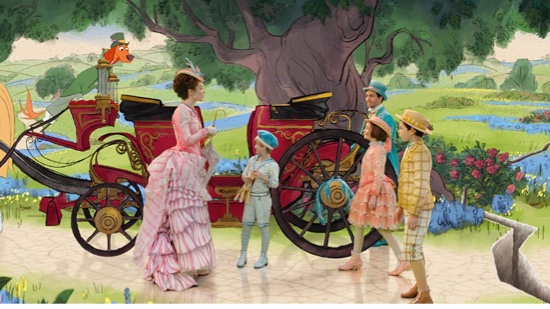Disney’s Year of Re-Imagineering
Christopher Robin, Mary Poppins Returns and mythologizing a century of IP
Movies Features Disney
Christopher Robin: I’ve cracked!
Pooh: I don’t see any cracks. A few wrinkles maybe.
I’m sure I’m supposed to turn off my brain and engage my heart while I watch cute little films like Christopher Robin and Mary Poppins Returns (a couple better-than-okay movies!), but it’s proven impossible. On the one hand, these were modest mid-list films, neither of which seemed to have been primed to be major blockbusters. On the other, they seem like the latest in an ongoing effort by Disney to take the studio’s deep catalog and push some of it into a sort of folktale timelessness—the sort of thing that, like Goldilocks or Hercules, is recognized by everybody.
Disney just also wants to own that sort of story, right from the very beginning.
Your Favorite Old Characters in a New Time

Christopher Robin is not the first attempt by Disney to re-imagine an old property, but it is a significant attempt to continue the telling of an old story with a modern update. Winnie the Pooh, once another character in the British kid’s lit canon who sits on the shelf beside Peter Pan and Alice and the Pevensey siblings, is now almost wholly associated with its Disney incarnation. This latest movie, a live-action story about the fictional Christopher Robin character (here played by Ewan McGregor), sets the scene after he’s well and truly become a dull adult. Consumed by work and with no understanding of how his wife and child need him to be emotionally present, he is visited once more by his magical stuffed bear, Winnie the Pooh.
The craft and care that went into Christopher Robin shows through in every shot. The goal was to make Pooh, Tigger, Piglet and Eeyore—those characters based on the actual toys author A.A. Milne’s son had—look like living plush dolls. It could have been a journey into the uncanny valley, but the characters come off cute and cuddly. (Granted, crossing that valley is a bit less demanding with toys and fur.)
Most importantly, and most in keeping with the spirit of the original Winnie the Pooh works, these characters present as children. The Christopher Robin of Milne’s books imagined scenarios in which he was the grown-up, and his animate toys were children whose fears and troubles he interceded in to resolve. That’s precisely how the plot of Christopher Robin unfolds, with McGregor, stressing out as he fights against a deadline to figure out how to save his foundering company from having to lay off everybody, being summoned back to the Hundred Acre Wood by a lost Pooh (Jim Cummings, the voice of the character since 1988). The whimsy and humor comes in McGregor, a Very Serious Adult, finding himself having to manage the emotions of his pack of friends. It feels like he is having to bring them back to a place of stability. And along the way, of course, he’s brought to a place of childlike wonder himself.
There’s nostalgia at play here. Cummings, still doing a near carbon copy of Sterling Holloway’s voice, is the strongest link back to the Disney cartoons. One of the year’s notable tear-jerker scenes was the meeting between (grown) boy and bear, as McGregor finds his live, talking bear of very little brain on a park bench. Christopher Robin’s other friends don’t recognize him at first, but Pooh, perfectly innocent, knows him immediately, touches his face, and tells him he hasn’t changed at all.
Mary Poppins Returns to Form as well as Story

Mary Poppins Returns is short on plot and long on somewhat laborious musical set pieces. It’s also further proof that Emily Blunt can convincingly and stunningly portray basically any role—it’s a disservice to either actor to say Blunt comes off as a perfect Julie Andrews. It’s probably more accurate to say that both come off as a perfect Mary Poppins.
Like Christopher Robin, we’re returning to the child characters of the first film, all grown up, as they struggle with mundane adult concerns that threaten to crowd out the flights of fancy that make life in gas-choked London worthwhile. (It’s funny how both feature a weasel of an antagonist in a sharp mid-century suit—Mark Gatiss of Sherlock fame in Christopher Robin and no less than Colin Firth here as the two-faced banker looking to repo the Banks family home.) We join the Banks family again as they face this foreclosure, and once again receive an application from Mary Poppins, the very same Level 20 Illusionist who came out of nowhere to help them as children and hasn’t aged a day.
Notable is how the movie is not just hitting some of the same plot beats—or rather, a lot of them, as we have a clean-up song, a helping hand from the cheery working class, an eccentric relation of Mary’s, and a celebratory ending with an airborne theme. It’s reviving the feel of one of those old timey musicals that would’ve warranted a road show back in the day, and feels like its nostalgia is aimed partly at this lost format, one which older audiences remember with greater clarity.
In that regard, with Lin Manuel-Miranda singing and dancing along, it’s a fun, light movie that gets by on the strength of Blunt’s performance and feels like a real continuation of Julie Andrews’ original take on the character.

Both of these works are about escapism helping us deal with the grind of daily life, about drawing lessons from stories to help us get our groove back. It’s just impossible to forget that this message is coming to us from Disney, who is reasserting its ownership over these quirky, singular visions. These modern day fables, with each year, grow further from their original creators and closer to their current owners. A.A. Milne died in 1956, and the great bulk of Winnie the Pooh-related anything now comes to us from Disney. P.L. Travers, who died in 1996 at the age of 96, famously despised the Disney adaptation of her novel Mary Poppins, and Disney went ahead and just made a movie about how the whole rights dispute was a heartwarming story (Saving Mr. Banks) before steaming ahead with Returns.
A folktale surviving its original creator and becoming part of the cultural fabric is nothing new. A long-running franchise surviving its creators and becoming a legacy property with installments created by a corporation is also nothing new. These two works, though, feel as if Disney is somehow trying to do engineer a feeling of their owned properties entering that kind of folk space—the place where they’ll live on in the hearts of every child of all ages (or however you want to put it).
They just also want to charge you (and the foreign market) for the privilege of reliving those stories.
Kenneth Lowe is a bear of very little brain. You can follow him on Twitter and read more at his blog.